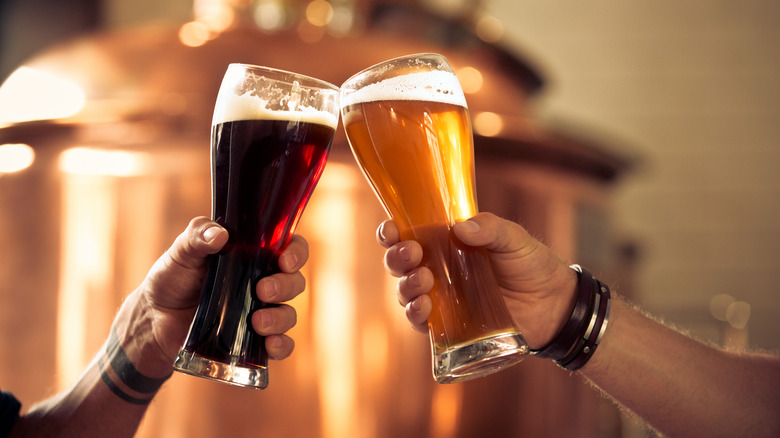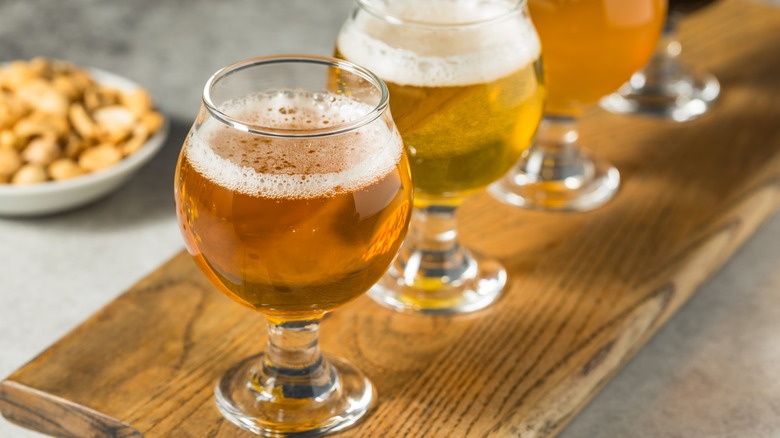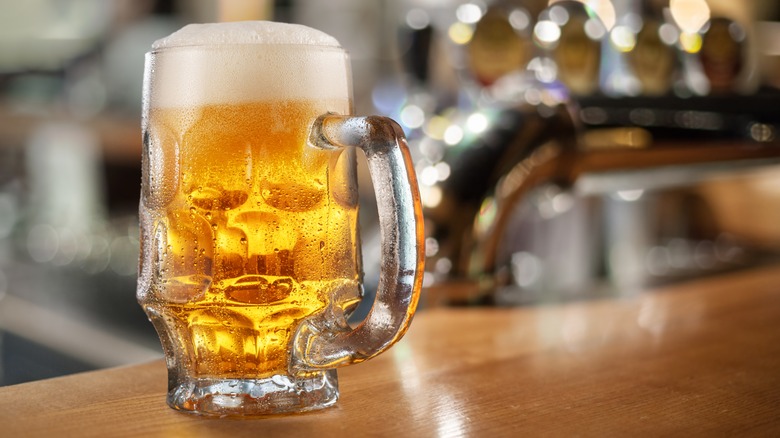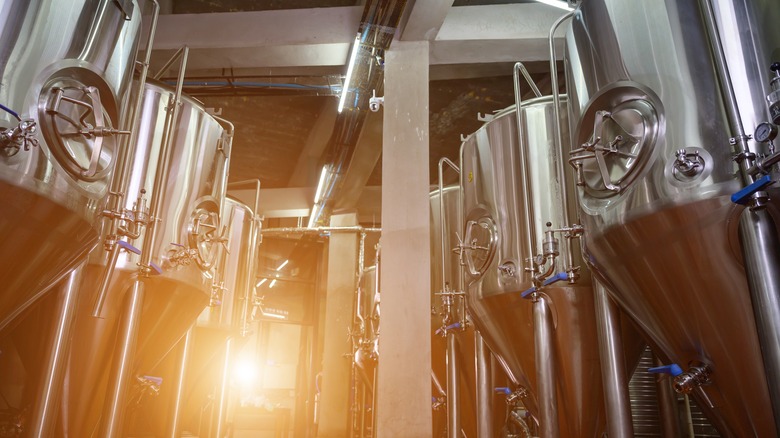Ale Vs Lager: What's The Difference?
We may receive a commission on purchases made from links.
If you don't consider yourself a "beer person" or don't go much further in preference than simple domestic beers versus imported craft beers, then maybe you've never thought much about what actually makes a lager and an ale different from each other. Beer is beer, right? Not so much: There are lots of different ways to brew up a pint, and there's more to their distinctions than what kind of beer glass the final product is served in (most standard beers are right at home in a classic pint glass, like those in Kitchen Lux's set of 12, anyway).
Rather than color, the difference between lagers and ales involves yeast, and how the beer is eventually fermented. Lagers are brewed at colder temperatures with bottom-fermenting yeasts, while ales are brewed at warmer temperatures with top-fermenting yeasts. This is an important distinction: These two types of fermentation require different temperatures and different types of yeast, and the final product typically comes out tasting slightly different, too. Lagers have a more simple, refreshing flavor which makes them easy to drink, while ales are sharper and typically stronger in taste, often boasting spicy or fruity notes. That's generalizing a little, however, because there's wide variety in how a beer can turn out and, consequently, plenty of unique lagers and ales out there.
Ales are top-fermented and brewed warm
When it comes to "which type of beer came first," the answer is most certainly the ale. Humankind has made fermented barley drinks since ancient Mesopotamia, but that beer recipe was extremely thick and more closely resembled a sludgy soup than a beverage. Modern beer is thought to date back to Europe around 800 B.C., when brewers began using hops (the flowers of the Humulus lupulus plant) as a main ingredient. Much of this beer was brewed at warmer temperatures and while the ingredients fermented in their container, the thick yeast would rise to the top. Once it was skimmed off, the result was a drink you'd recognize as beer.
There's quite a bit of variety among ales. There are amber ales, brown ales, stouts, saisons, pale ales, and plenty more. You might also recognize the term "IPA," or India Pale Ale. Unlike pale ales, IPAs include a greater amount of hops. Hops provide much of a beer's flavor, and so IPAs have a much more intense, bitter profile as a result, making them popular among craft beer aficionados who enjoy that taste. American pale ales like Sierra Nevada or Dale's Pale Ale, or wheat ales like Blue Moon, are other ales you'll commonly find on store shelves.
Lagers are bottom-fermented and brewed cold
If the average person just wants a "regular beer," they'll probably receive a lager. Despite lagers being much more popular than ales nowadays — about 87% of beer sales are lagers, which include most domestic beers you'd find at a convenience store — they were invented more recently. Lagers first came about in Germany in the 15th century; they were brewed in cold temperatures, often in caves, and the type of yeast they added sank down to the bottom of the tank instead of floating at the top.
Many lagers are crisp and easy to drink, and they tend to encompass light beers with a lower alcohol content. These include many best-selling beers like Bud Light and Heineken, as well as popular Mexican lagers like Pacifico and Corona. Pilsners, a type of pale lager that originated in the modern-day Czech Republic, are also pretty common sights on bar taps: These include Modelo, Carlsberg, and Pilsner Urquell (named after the Bohemian brewery that created the style). Naturally, many Oktoberfest beers tend to be lagers since the style comes from Germany, and they're often Märzens (amber-colored lagers) or festbiers (golden, more malt-heavy lagers). If you're introducing somebody to beer, you might give them a pale lager first before moving on to stronger flavors.
Brewing lagers and ales
Most steps of the brewing process are the same for ales and lagers alike: Grains like barley are processed into malts, which are then mashed and heated, and the liquid that's drained during this procedure (called the wort) is fermented. This stage is where the yeast is introduced — and the point at which the process changes depending on the yeast. Yeast is a living organism that's critical to the fermentation process, because yeast microbes are what convert the sugars to alcohol.
Ales, made from top-fermenting Saccharomyces cerevisiae yeast, are usually left in a fermentation tank at temperatures ranging from 60 to 78 degrees Fahrenheit. They only take around a week or slightly longer to ferment, and this shorter timeframe at room temperature makes them easier choices for homebrewers. Meanwhile, lagers are made from bottom-fermenting Saccharomyces uvarum yeast and are typically fermented at somewhere between 45 and 58 degrees Fahrenheit for at least a few weeks and often longer. Lagers often have an extra period where they're stored in a keg at colder temperatures closer to freezing for months or longer after fermentation, a process which is called "lagering."
While ales lean toward fruity flavors because top-fermenting allows for more fragrant compounds to form, there's lots of variety among both kinds of beers. So, experiment around and discover what you like while drinking responsibly.



